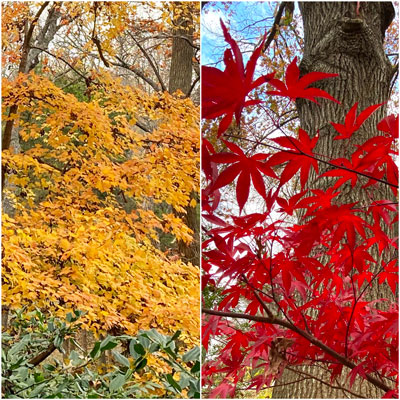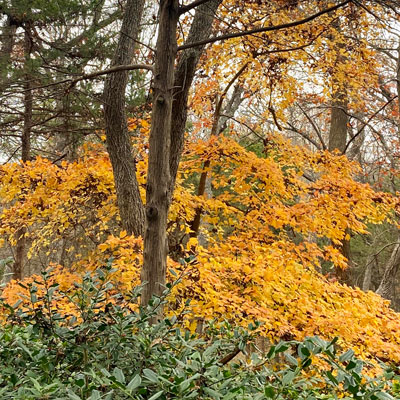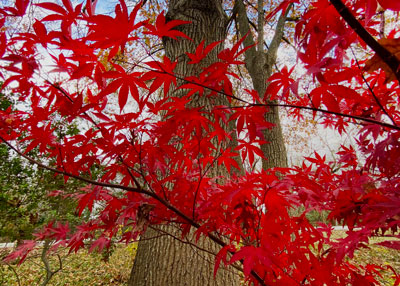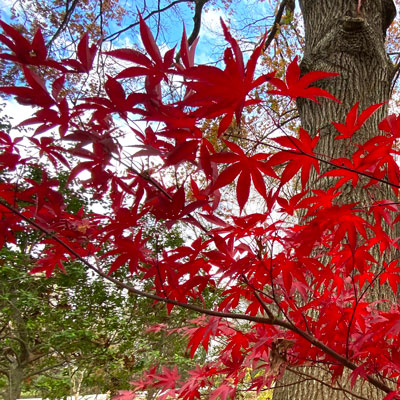My Two Favorite Late-Season Maples

There are two trees in our gardens that I know will give us a show every fall. But I always get a little nervous when Thanksgiving passes and they’re still looking like summer – no change toward their fall glory.
These are always the last two trees to turn in our gardens. Long after the ginkgoes and Coralbark maples. Long after the pistachios, crape myrtles and even most of the red oaks.
Chalk maple and my wife’s favorite of all the Japanese maples, the one called ‘Bloodgood.’

Chalk maple…
I bought this from a fabulous little nursery in West Austin 36 years ago. I figured if it would grow for them in their Hill Country alkaline soils it would probably do great for me in DFW.
Then I looked it up. (Acer leucoderme.) The TAMU horticulture website describes it as “The loveliest as well as the rarest of Texas’s maples.” It says it comes from the Sabine National Forest (uh oh), and that it prefers acidic or neutral soils (UH OH for me).
But my little tree has just done famously. I have it planted on the woodland edge of my landscape, hollies on one side, bare shaded hillside on the other and towering pecans and oaks overhead. And it has thrived.
I rarely see it in nurseries I frequent, but maybe it’s more common in nurseries as you head toward the Sabine National Forest. As for me, I’m just glad that I found it.

Japanese maple ‘Bloodgood’
There are literally hundreds of named varieties of Japanese maples, all stemming from the species Acer palmatum.
The straight species has star-shaped leaves that are medium-green in color. The tree grows to 25 to 30 feet in height and almost that wide.
Named varieties, however, range from just 2-3 feet at maturity, to as tall as the species. Their leaves are star-shaped, while many are highly fringed, even frilly. Many are green, but the most dramatic (and therefore the most popular) are the types with reddish-purple leaves. Most of those are vivid when their new growth emerges in the spring. Many are striking in the fall. Most are dull reddish-green all summer.
Bloodgood Japanese maples, by comparison, hold their red color better in summer’s heat than just about any other selection. My wife loves looking out our back windows and seeing that color wherever she looks. Every time I head out to a garden center intent on adding a couple of different Japanese maples to our collection, I come back with more Bloodgoods. I’m a practical man.

These trees’ basic needs…
• Both species are better adapted to the eastern 40 percent of Texas (in very loose terms, I-35 and eastward). That’s because soils and climate (humidities) are more favorable there.
• Both of these maples do best in mostly shade – especially shade from the hot afternoon sun in the summer.
• Deep, rich and highly organic soils are always best.
• Maintain a uniform and constant supply of moisture to the trees. If you allow them to dry out, their leaf margins will scorch and burn. You may even lose the plants entirely.
• Few/no insects or diseases bother these trees.
